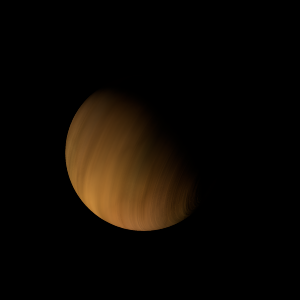|
|
Space Astro
|
Info for exoplanet "Thee Hy"
| Scientific (actual) data |
|---|
| Name | HD 219134 d |
| Planet status | Confirmed |
| Planet mass | 0.05236 |
| Mass sini | 0.067 |
| Orbital period | 46.71 |
| Semi major axis | 0.225 |
| Orbit eccentricity | 0 |
| Discovered | 2015 |
| Updated | 2019-09-24 |
| Tperi | 2449960 |
| K | 4.4 |
| Publication | Published in a refereed paper |
| Detection type | Radial Velocity |
| Mass measurement type | Spectrum |
| Star name | HD 219134 |
| Right ascension | 348.32° |
| Declination | 57.17° |
| Mag v | 5.57 |
| Star distance | 6.55 |
| Star metallicity | 0.11 |
| Star mass | 0.794 |
| Star radius | 0.778 |
| Star sp type | K3V |
| Star temperature | 4699 |
| Wikipedia article | HD 219134 d |
Back
| |
| Fictional info (?) |
|---|
| Suggested name | Thee Hy |
| Planet type | Small cold gas planet |
| Having almost no atmosphere to retain heat, it has surface temperatures that vary diurnally more than on any other planet in its solar system, ranging from 110°K (-163°C) at night to 1120°K (847°C) during the day across the equatorial regions. |
| Atmosphere | Molecular hydrogen | 47% |
| Sulfur dioxide | 33% |
| Ammonia | 16% |
| Ozone | 3.7% |
| Neon | 0.43% |
| Oxygen | 0.32% |
| Formaldehyde | 0.041% |
| Atmospheric pressure | 10 bar |
 |
| No known satellites |
| Google search for Thee hy |
|
Website by Joachim Michaelis
|
|
|
|